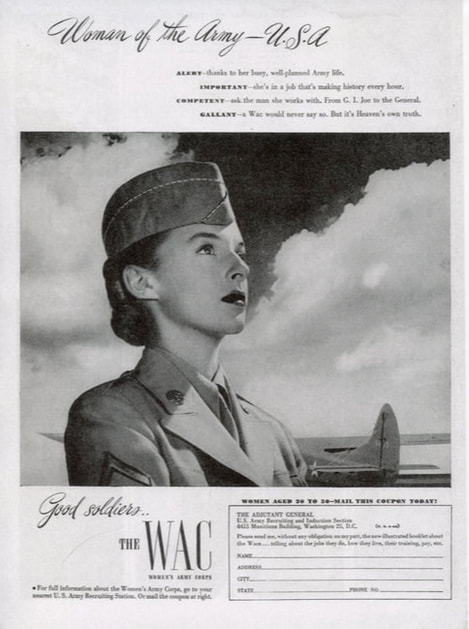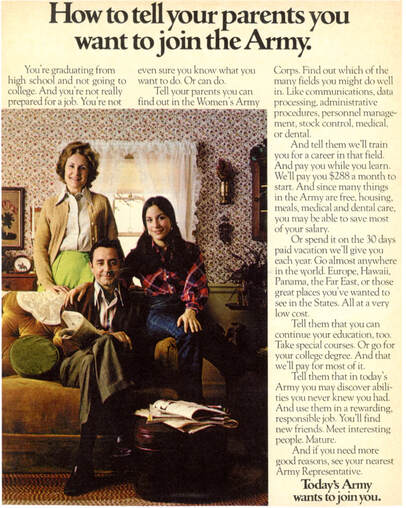|
Updated: 2/17/2023
Are you looking for time capsules back into the 20th century? Advertising is a perennial repository of culture brimming with hints of "the way it was." Some of my favorite ads recruit women to the Women's Army Corps (WAC). I started collecting WAC advertisements while writing my novel, Women's Company - The Minerva Girls, about WACs in the 1960s and 1970s. I invite you to take a look at two ads that I added recently to my collection. Both ads appeared in popular women's magazines.
World War II. Persuasion via a Call to Patriotism and Performance.
The minimum age for a woman to enlist in the WAC (1942-1978) varied over time.
Patriotism.
Performance.
Calling new high school graduates...
How to tell your parents?
Telling your parents you want to join the Women's Army Corps could create a dicey situation for a potential recruit just out of high school.
So you needed to be able to tell Mom and Dad about all the advantages listed in this 1972 advertisement published in Seventeen magazine.
Then there was your age.
Did the WAC meet its recruiting goals? Not always.
In short, as equality for women within the Army increased, so did enlistments.
Would you like to see more WWII WAC recruiting ads?
How about WAC recruiting ads from the period 1965-1973?
Until next time, good reading! Most importantly, take care during these troublesome times of COVID-19. Americans have overcome many calamities in the past and can do so again--together.
0 Comments
Your comment will be posted after it is approved.
Leave a Reply. |
AuthorLynne Schall is the author of three novels: Women's Company - The Minerva Girls (2016), Cloud County Persuasion (2018), and Cloud County Harvest (November 2022). She and her family live in Kansas, USA, where she is writing her fourth novel, Book 3 in the Cloud County trilogy. Archives
October 2023
|



 RSS Feed
RSS Feed

